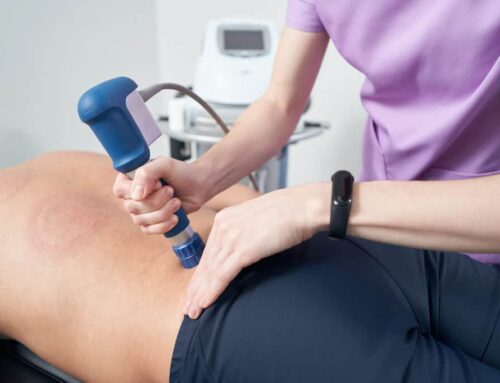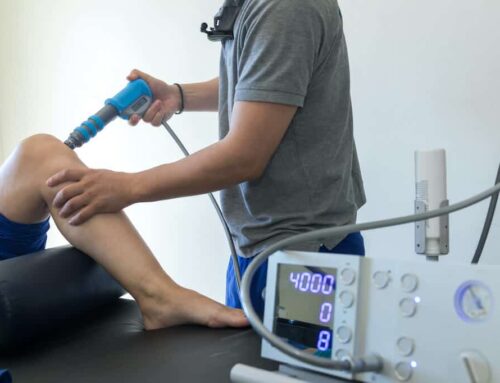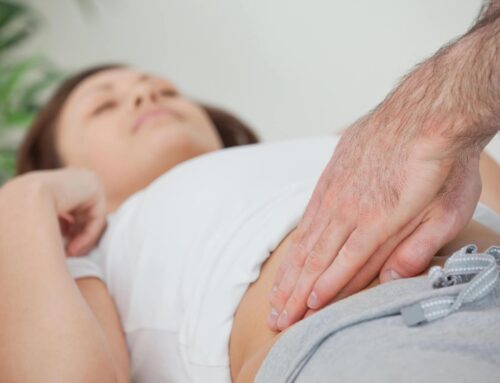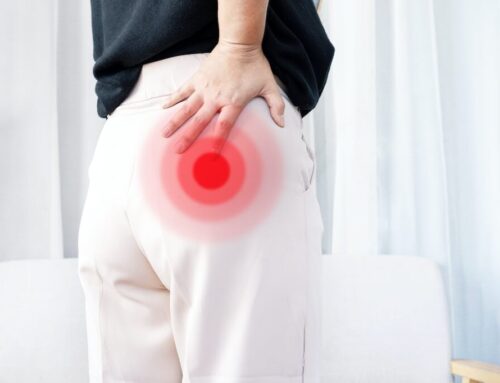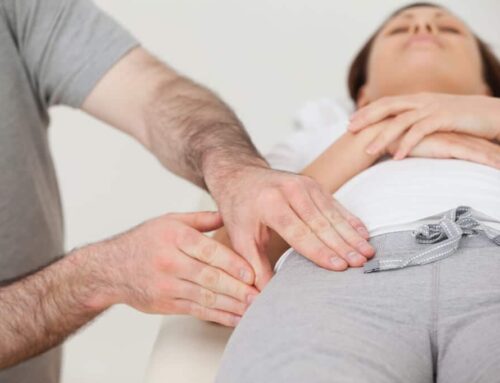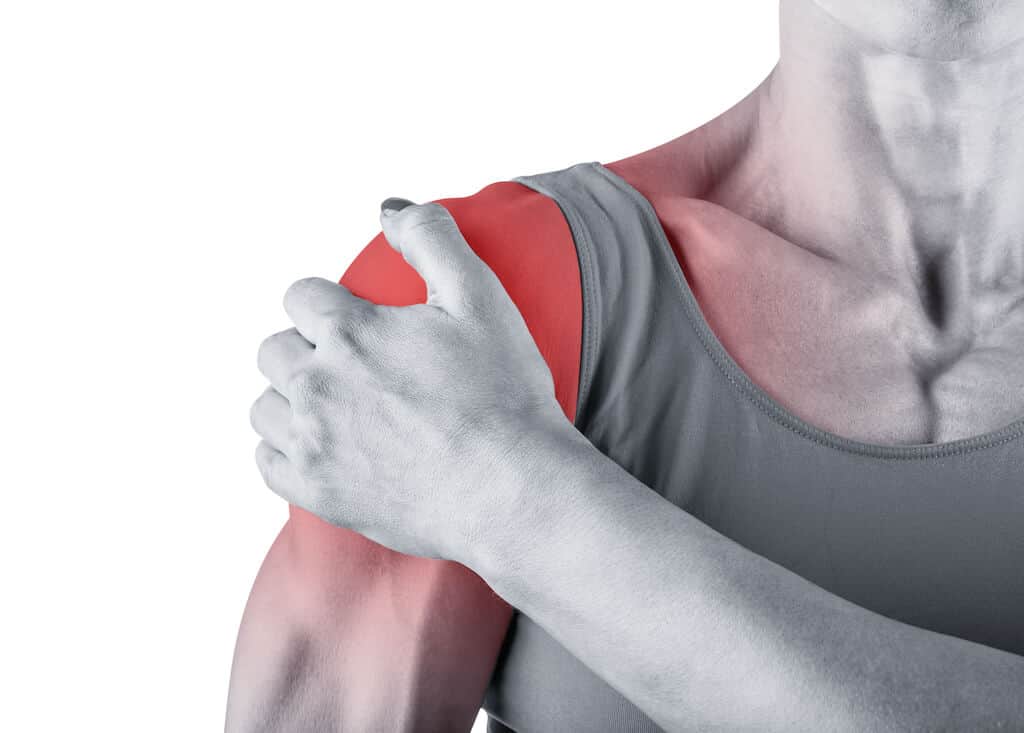
If you’ve ever had a rotator cuff tear, then you know how difficult it can be to treat effectively and keep up with an active lifestyle. In fact, rotator cuff tears are a common reason for many people to stop exercising, playing sports, and taking care of important life projects. But what if it didn’t have to be this way?
As a physical therapist and conditioning specialist, I’ve helped many people treat their rotator cuff tears to get back to their favorite activities confidently. In this article I’ll share with you the basics of rotator cuff tears, how to treat them, and how to increase your chances of a full recovery.
What is A Rotator Cuff Tear?
Rotator cuff tears are a common shoulder injury that usually result from excess strain on the tendons of the rotator cuff, which is a group of muscles and tendons in your shoulder that plays a major role in shoulder stability during movement.
If the tendons of the rotator cuff become stressed beyond their limit, tears in the muscle or tendon can occur. Rotator cuff tears are usually a degenerative condition, meaning that they happen gradually over time because of stress and wear on the rotator cuff tendons. This stress often happens because of a root cause such as muscle imbalances leading to awkward or inefficient shoulder movement.
Rotator cuff tears can be partial thickness or full thickness, depending on the size that is seen with imaging (usually with MRI). The good news is that many partial thickness tears are able to heal with physical therapy and exercise.
What Causes Rotator Cuff Tears?
Now that we know rotator cuff tears are often degenerative because of a root cause such as muscle imbalances in the shoulder, let’s dive into how these tears happen.
Because the rotator cuff plays a big role in shoulder stability and movement, rotator cuff tears are most common in athletes who perform a lot of reaching overhead, throwing, and pressing movements. These movements are most likely to irritate the supraspinatus tendon, which sits on top of your shoulder joint and helps to stabilize and lift your shoulder away from your body.
The supraspinatus tendon is most commonly injured because of bone rubbing that gradually wears the tendon down – this is often called impingement. While rotator cuff tears are more likely to happen in athletes who perform lots of overhead activity, they can ultimately happen to anyone with limited shoulder space or muscle imbalances causing extra stress on the rotator cuff tendons.
Tips for Managing Your Rotator Cuff Tear
Because rotator cuff tears are so common, there are a variety of treatments available for both partial thickness and full thickness tears. While full thickness tears are often fixed with surgery to repair the tendon or protect the shoulder, many partial thickness tears can be treated with conservative care such as physical therapy while getting great results.
Physical therapy is especially important for partial thickness rotator cuff tears because it avoids many of the costs, risks, and downtime that comes with surgery. More importantly, outcomes may even be the same as surgery depending on the size of the tear.
Here are some of the most important things to focus on when treating a rotator cuff tear to optimize your recovery and return to your normal activities faster:
Pain Management
When it comes to recovering from an injury, managing pain should be a top priority. This is because pain stops us from wanting to move and exercise, which are critical for strengthening your shoulder and making a full recovery.
Here are a few pain management techniques that you can use for a rotator cuff tear.
- Heat or Cold: Heating pads or cold compresses can be used to reduce discomfort or muscle tension in your shoulder, which can help with preparation before exercise or recovery after exercise.
- Medication: Over-the-counter medications such as acetaminophen (Tylenol) or Ibuprofen (Advil) can be used to reduce pain or inflammation in your shoulder. While long-term use isn’t recommended, both can be helpful to facilitate better tolerance for exercise.
- Massage: Gentle massage of the muscles of your shoulder can be used to relax muscle tension and limit pain signals coming from the area surrounding your rotator cuff. Similar to other pain management methods, massage is helpful for preparing for or recovering from rehab activities like exercise.
Rotator Cuff Strengthening
One of the most important parts of rehab for a rotator cuff tear is strengthening exercise. Although it might not seem intuitive, tendons actually become healthier when they are put under the right amount of stress consistently through exercise.
Two main types of of rotator cuff strengthening exercises to focus on are isometric and active:
- Isometric exercise means strengthening your muscles without moving your arm – think of pressing against an immovable object. This type of strengthening is important to strengthen your tendon when moving your arm normally is still too painful.
- Active exercise means strengthening your muscles while moving your arm, which is the type of strengthening that most of us are familiar with. This type of strengthening is ultimately what will help restore normal function to your shoulder for exercise and sports activities.
For the best results with rotator cuff strengthening, it’s best to start with low resistance and gradually work your way up to higher resistance based on how your shoulder feels during and after exercise. If your exercise intensity is causing more pain and discomfort, then reducing the intensity or trying isometric exercise may be the best option.
Shoulder Mobility
Similar to muscle strength imbalances, shoulder mobility deficits can play a big role in causing repetitive irritation of your rotator cuff tendons. For example, restricted shoulder mobility can lead to impingement, where the bone covering the supraspinatus tendon becomes compressed.
When improving shoulder mobility, it’s important to focus on increasing your range of motion into positions such as reaching overhead or behind your back. With training, these motions can become less irritating to your rotator cuff tendon and allow more opportunity for healing while also improving your function in day-to-day life.
Scapular Strengthening
Your scapula, also known as your shoulder blade, plays an important role in shoulder movement and stability. It’s important for the muscles of your scapula to be well-conditioned to support your shoulder and prevent repetitive microtrauma to your rotator cuff tendons.
Two of the most important scapular muscles to train are the serratus, which moves your scapula forward (protraction), and the lower trapezius, which tilts your scapular upward (upward rotation). These muscles work together to help hold your shoulder in optimal position during overhead reaching.
Here are two common exercises that can be used to strengthen the serratus and lower trapezius:
- Wall Slide: Start by facing a wall with your arms at your sides, then raise your elbows up to rest on the wall with your elbows bent 90 degrees and forearms pointing straight up. Keeping your forearms pointing straight up, slowly slide your arms up the wall as far as you comfortably can, then return to the start.
- Wall Lift-Off: Start by facing a wall with your toes touching the wall, arms overhead in a ‘Y’ position, and your thumbs pointing away from the wall. Without arching your back, gently lift your arms away from the wall while tipping your shoulder blades backward. Return to the start.
There are hundreds of exercises that can be used to strengthen your scapular muscles, and the best exercises for you depend on your specific injury and recovery status. For best results, always consult with a physical therapist who has training in treating rotator cuff tears.
Shockwave Therapy
EPAT Therapy, also known as Extracorporeal Shockwave Therapy (ESWT), is an advanced, non-invasive treatment for orthopedic conditions designed to provide pain relief and improve tissue healing. In its most basic form, shockwave therapy encourages your body to enhance the activity of its natural healing cells to regenerate a problematic tissue or area, such as a partially torn rotator cuff tendon.
EPAT Shockwave is an exciting treatment option because it improves tissue healing for an area that has degenerated due to poor blood flow, weakness, or overuse injury. This is especially relevant for rotator cuff tendons because they generally have limited blood flow and often need additional stimulation for repair.
Shockwave has a proven success rate that is equal to or greater than that of traditional treatment methods, without the typical risks or complications that most injections and surgeries involve. Even better, the benefits of shockwave can be enhanced when combined with other treatments in physical therapy, such as regular exercise, to provide you with accelerated results.
Remember, injuries like rotator cuff tears often happen gradually over time. This means that to get the best results with your recovery, you’ll need to be consistent with your efforts and gradually progress your activity over time. Recovery isn’t always easy, so having the right support system is essential to reaching your performance goals.
How Can Working with an Expert at DPT Help Me Recover From Rotator Cuff Tear Faster?
At The Doctors of Physical Therapy, all of our experts specialize in getting your symptoms under control while also identifying the root causes of your rotator cuff injury to get the best results possible. With less pain, improved shoulder strength, and confidence in your recovery, you can get back to doing what you love faster.
With the help of expert movement analysis, exercise guidance, and regenerative medicine technology, you can get meaningful results faster to perform your best for the long-term.


